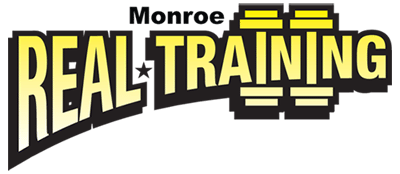Why Exercise is Good For Your Bones
The topic of my second article is how exercise impacts your bones. I began my scientific career a long time ago as an undergraduate working in a lab that studied how metastatic cancer stimulates bone loss. Although I no longer work in that area of research I have maintained an interest in how bones work in normal and disease states and thus I enjoy keeping up with the latest findings in the field.
Maintaining good bone health is a critical aspect of maintaining good health and mobility throughout our lives. Fractures can often be debilitating and decrease quality of life. Osteoporosis and fracture risk is an important health issue for all of us, but particularly the elderly, females and individuals from Caucasian and Asian descent. Everyone though is at risk of developing skeletal problems as we age, and we must engage in activities that mitigate these issues if we want to be active and productive people in our golden years.
It is widely accepted that exercise serves a protective role against osteoporosis. In this article I will discuss the biology of how bones are strengthened and why calcium supplements are typically not enough to maintain healthy bone mineral density (BMD) levels, and I will draw your attention to the idea that not all exercises have the same therapeutic value in the context of bone health.
Bones are not solid, static entities that do not change, but they are complex structures full of active cells. Two of the major cell types in bones are osteoclasts and osteoblasts. These two cell types exhibit an intimate relationship that is paramount in maintaining strong bones. The osteoclast is a large cell (much larger than many other cell types) that destroys mineralized bone. These giants secrete proteins known as digestive enzymes that chew away bone. The osteoblast is a cell type that forms mineralized bone. Thus, the osteoclast destroys bone while the osteoblast reforms it. This destruction and reformation is known as bone turnover and is essential for maintaining strong bones. The number of osteoclasts and osteoblasts and their activity levels in a bone must be appropriately maintained to ensure that one cell type is not functioning at a level that is higher or lower than its sidekick. An imbalance in the amount of bone that is destroyed or replaced can result in altered BMD and fractures. This is the basis for why some of the older hip and knee replacements had to be changed out every ten years or so. The older replacements would cause an imbalance in the numbers and activity levels of the osteoclasts and osteoblasts, promoting bone destruction in the area surrounding the replacement. Thus, a new and larger implant would have to be placed in the area in question. The material used to make implants has changed from the original formula, but there are still issues with the newer material.
How does exercise play a role in maintaining strong bones? Impact exercises (i.e. running and strength training) promote mechanical stress, a phenomena that leads to many cellular and molecular changes. One result of mechanical stress is that it can cause cells to release their contents, which includes molecules that signal the osteoclasts and osteoblasts to develop and function properly. Without mechanical stress the normal turnover of bone by osteoclasts and osteoblasts would occur at a much slower rate, resulting in the weakening of bones.
Although it is critical to consume appropriate levels of calcium (I like to get my calcium from ice cream although stating this is probably not appropriate for this blog), osteoporosis does not result from simply not consuming enough calcium. Bone turnover via the osteoclast and its sidekick the osteoblast are required for strengthening bones. Many medications for osteoporosis directly target bone cells as a mechanism for normalizing their numbers and activity levels. Exercise provides a non-pharmacological means of maintaining normal bone turnover.
You may be wondering what exercises you should engage in and how long you should exercise to maintain strong bones. Based on my literature research of this topic there appears to be no exact formula except that it is widely accepted that running and resistance training helps reduce bone loss. In contrast, bicycling and swimming do not appear to play a role in maintaining good bone health. As an example, there are some reports that cyclists have lower BMD in certain areas of the spine in comparison to runners, and they have similar BMD as sedentary controls. In addition, it has also been reported that an aquatic exercise program does not improve BMD in older females. Personally, I am going to continue running despite the negative comments I hear about marathoners from the sedentary segment of the population, I will continue cycling and I will continue eating ice cream. This prescription should keep me both happy and mobile.
References
Nagle, K.B. & Brooks, M.A. (2011) A systemic review of bone health in cyclists. Sports Health 3:235-43.
Martyn-St. James, M. & Carroll, S. (2010) Effects of different impact exercise modalities on bone mineral density in premenopausal women: a meta-analysis. J. Bone Miner. Metab. 28:251-67.
Pernambuco, C.S., Borba-Pinheiro, C. J., Vale, R.G., Masi, F., Monteiro, P.K. & Dantas E.H. (2013) Functional autonomy, bone mineral density (BMD) and serum osteocalcin levels in older female participants of an aquatic exercise program (AAG). Arch. Gerontol. Geriatr. 56:466-71.
Scofield, K.L. & Hecht, S. (2012) Bone health in endurance athletes: runners, cyclists, and swimmers. Curr. Sports Med. Rep. 11:328-34.
Thompson, W.R., Rubin, C.T. & Rubin, J. (2012) Mechanical regulation of signaling pathways. Gene 503:179-93.
- Healthy Eating – Part 3 - September 1, 2014
- Healthy Eating – Part 2 - June 25, 2014
- Healthy Eating – Part 1 - June 12, 2014

